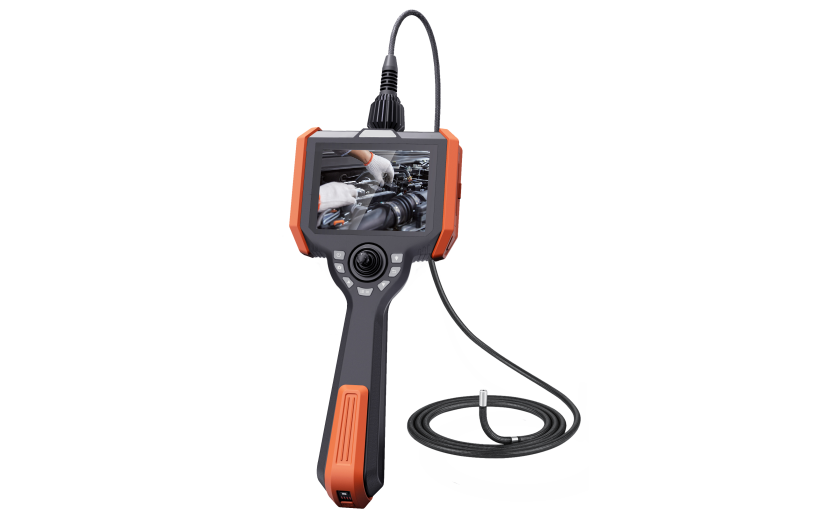Want to know more?
Don't miss any product updates on our industrial borescopes

Industrial borescope
solution service provider
Company Address
Office : 18F, Pingshanshouzuo, Pingshan District, Shenzhen,Guangdong
Contact Info
Ph: +86-0755-89588241

The principle of 360-degree rotation of industrial endoscope hose is mainly based on the combination of mechanical structure design and drive control technology. Its core is to enable the hose to achieve full-range flexible steering and rotation in a small space through precise mechanical structure and flexible drive mode. The following is a detailed description of the specific principle:

Multi-layer composite structure: The hose is usually made of multiple layers of materials, including a high-strength metal braided layer, a flexible rubber or plastic lining, and a wear-resistant coating. This structure not only ensures the flexibility of the hose, but also provides sufficient support to enable it to withstand the stress during rotation and bending.
Articulated segmented design: The hose adopts a segmented joint design inside, and each joint is connected by a universal joint or similar structure, allowing the hose to bend and rotate freely in all directions. The number of joints and the design accuracy directly affect the rotation flexibility and maneuverability of the hose.
Micro guide wire: Multiple micro guide wires (such as steel wire or fiber wire) are embedded in the hose. By controlling the tension and relaxation of the guide wire, the bending direction and angle of the front end of the hose can be accurately controlled to achieve 360-degree rotation.
Manual drive: The tension and relaxation of the guide wire are manually controlled by the knob or lever on the operating handle to achieve the rotation and bending of the hose. This method is simple and intuitive, and is suitable for scenes that require fine manipulation.
Electric drive: The built-in micro motor and transmission mechanism control the movement of the guide wire by electric means to achieve automatic rotation and bending of the hose. The electric drive method has higher precision and efficiency and is suitable for scenes that require long or complex operations.
Intelligent control system: Combined with sensors and algorithms, the intelligent control system can monitor the position and posture of the hose in real time, and automatically adjust the rotation and bending of the hose according to the preset path or target to achieve automatic detection.
High-resolution camera: A high-resolution camera is installed at the front end of the hose, which can capture images of the inspection area in real time and transmit the images to the display through optical fiber or wireless transmission technology.
Lighting system: Built-in high-brightness LED lighting ensures sufficient light in a small space so that the camera can form a clear image.
Image processing and analysis: Through image processing algorithms, the captured images are enhanced, analyzed and identified to help inspectors quickly find defects and anomalies.
Complex pipeline inspection: In the fields of petroleum, chemical industry, aerospace, etc., industrial endoscope hoses can be used to detect corrosion, cracks, blockages and other problems inside the pipeline. The 360-degree rotation function enables it to cover every corner of the pipeline.
Mechanical equipment maintenance: In the maintenance of mechanical equipment such as engines and turbines, the hose can go deep into the equipment to check the wear and looseness of parts and components, and detect potential faults in advance.
Advantages: Compared with traditional detection methods, industrial endoscope hoses have the advantages of non-destructiveness, high efficiency, flexibility, etc., which can significantly reduce detection costs and risks.
Higher Precision: With the advancement of materials science and manufacturing processes, the rotational accuracy and maneuverability of hoses will be further improved, and they will be able to adapt to more complex inspection needs.
Intelligence: Combined with artificial intelligence and machine learning technologies, industrial endoscope hoses will have stronger autonomous detection and analysis capabilities, and can automatically identify defect types and severity.
Multi-functional integration: Future hoses may integrate more sensors and functional modules, such as temperature, pressure, vibration, etc., to achieve multi-parameter synchronous inspection.


Industrial borescope
solution service provider